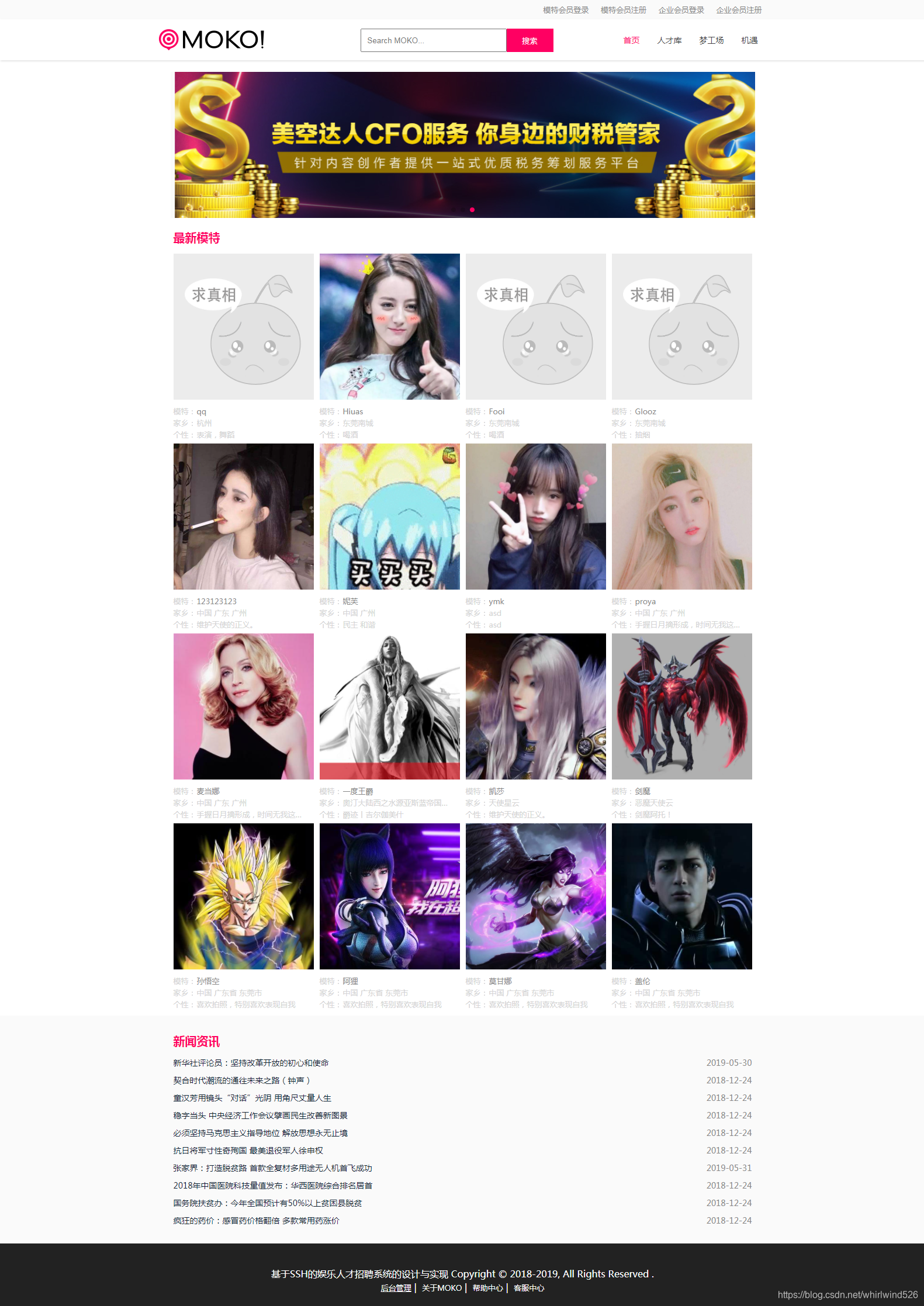基于SSH实现模特人才招聘网站
本文共 304 字,大约阅读时间需要 1 分钟。
本项目基于SSH框架开发实现,前端采用JQUERY+CSS进行交互处理,功能完整,用户体验较好。开发工具为Eclipse或IDEA,数据库采用MYSQL数据库。
系统分为三个角色:
个人用户:可以注册,填写简历,应聘企业发布的职位,管理查看个人的应聘信息
企业用户:可以注册,发布职位,管理查看应聘的个人信息
管理员:可以管理个人用户和企业用户的相关信息。
部分功能展示:

人才库

企业列表

个人登陆注册:


个人中心

企业登陆后:
企业中心:

管理员登陆:

新闻管理:

模特会员管理:

企业会员管理:

系统用户管理:

友情链接管理:

以上是模特人才招聘网站的系统功能展示,本项目运行完整,适合做毕业设计使用。
转载地址:http://dimb.baihongyu.com/
你可能感兴趣的文章
Nginx安装与常见命令
查看>>
Nginx安装及配置详解
查看>>
Nginx实战经验分享:从小白到专家的成长历程!
查看>>
Nginx实现反向代理负载均衡
查看>>
nginx实现负载均衡
查看>>
nginx开机启动脚本
查看>>
nginx异常:the “ssl“ parameter requires ngx_http_ssl_module in /usr/local/nginx/conf
查看>>
nginx总结及使用Docker创建nginx教程
查看>>
nginx报错:the “ssl“ parameter requires ngx_http_ssl_module in /usr/local/nginx/conf/nginx.conf:128
查看>>
nginx报错:the “ssl“ parameter requires ngx_http_ssl_module in usrlocalnginxconfnginx.conf128
查看>>
nginx日志分割并定期删除
查看>>
Nginx日志分析系统---ElasticStack(ELK)工作笔记001
查看>>
Nginx映射本地json文件,配置解决浏览器跨域问题,提供前端get请求模拟数据
查看>>
nginx最最最详细教程来了
查看>>
Nginx服务器---正向代理
查看>>
Nginx服务器上安装SSL证书
查看>>
Nginx服务器基本配置
查看>>
Nginx服务器的安装
查看>>
Nginx模块 ngx_http_limit_conn_module 限制连接数
查看>>
Nginx模块 ngx_http_limit_req_module 限制请求速率
查看>>